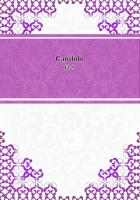The best general accounts of the reconstruction period are found in James Ford Rhodes's "History of the United States from the Compromise of 1850 to the Restoration of Home Rule at the South in 1877", volumes V, VI, VII (1906); in William A.Dunning's "Reconstruction, Political and Economic", 1865-1877, in the "American Nation" Series, volume XXII (1907); and in Peter Joseph Hamilton's "The Reconstruction Period" (1905), which is volume XVI of "The History of North America", edited by F.N.Thorpe.The work of Rhodes is spacious and fair-minded but there are serious gaps in his narrative;Dunning's briefer account covers the entire field with masterly handling;Hamilton's history throws new light on all subjects and is particularly useful for an understanding of the Southern point of view.A valuable discussion of constitutional problems is contained in William A.Dunning's "Essay on the Civil War and Reconstruction and Related Topics" (1904); and a criticism of the reconstruction policies from the point of view of political science and constitutional law is to be found in J.W.Burgess's "Reconstruction and the Constitution, 1866-1876" (1902).E.B.Andrews's "The United States in our own Time" (1903) gives a popular treatment of the later period.A collection of brief monographs entitled "Why the Solid South?" by Hilary A.Herbert and others (1890) was written as a campaign document to offset the drive made by the Republicans in 1889 for new enforcement laws.
There are many scholarly monographs on reconstruction in the several states.
The best of these are: J.W.Garner's "Reconstruction in Mississippi" (1901), W.L.Fleming's "Civil War and Reconstruction in Alabama" (1905), J.G.deR.
Hamilton's "Reconstruction in North Carolina" (1914), W.W.Davis's "The Civil War and Reconstruction in Florida" (1913), J.S.Reynolds's "Reconstruction in South Carolina", 1865-1877 (1905); C.W.Ramsdell's "Reconstruction in Texas"(1910), and C.M.Thompson's "Reconstruction in Georgia" (1915).
Books of interest on special phases of reconstruction are not numerous, but among those deserving mention are Paul S.Pierce's "The Freedmen's Bureau"(1904), D.M.DeWitt's "The Impeachment and Trial of Andrew Johnson" (1903), and Paul L.Haworth's "The Hayes-Tilden Disputed Presidential Election of 1876" (1906), each of which is a thorough study of its field.J.C.Lester and D.L.Wilson's "Ku Klux Klan" (1905) and M.L.Avary's "Dixie After the War"(1906) contribute much to a fair understanding of the feeling of the whites after the Civil War; and Gideon Welles, "Diary", 3 vols.(1911), is a mine of information from a conservative cabinet officer's point of view.
For the politician's point of view one may go to James G.Blaine's "Twenty Years of Congress", 2 vols.(1884, 1886) and Samuel S.Cox's "Three Decades of Federal Legislation" (1885).Good biographies are James A.Woodburn's "The Life of Thaddeus Stevens" (1913), Moorfield Storey's "Charles Sumner" (1900), C.F.Adams's "Charles Francis Adams" (1900).Less satisfactory because more partisan is Edward Stanwood's "James Gillespie Blaine" (1906).There are no adequate biographies of the Democratic and Southern leaders.
The official documents are found conveniently arranged in William McDonald's "Select Statutes", 1861-1898 (1903), and also with other material in Walter L.
Fleming's "Documentary History of Reconstruction", 2 vols.(1906, 1907).The general reader is usually repelled by the collections known as "Public Documents".The valuable "Ku Klux Trials" (1872) is, however, separately printed and to be found in most good libraries.By a judicious use of the indispensable "Tables and Index to Public Documents," one can find much vividly interesting material in connection with contested election cases and reports of congressional investigations into conditions in the South.
End















